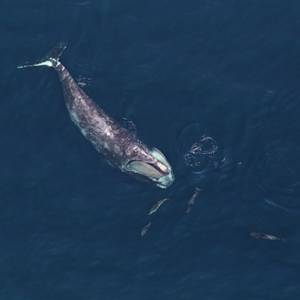Baiji
Extinct circa 2007 CE • Yangtze River
"The baiji, Lipotes vexillifer, was a species of dolphin found exclusively in China's Yangtze River. It's sometimes also known as the white dolphin or Chinese river dolphin . . . Human activities on the Yangtze River resulted in the baiji becoming one of the world's rarest and most threatened species. One of the greatest threats to their survival was overfishing, which not only robbed them of their prey but caused them to drown following entanglement in gear such as rolling hook long-lines and nets. Shipping traffic also put pressure on the baiji. The Yangtze River is one of China's main economic trade arteries and increasing numbers of boats and increased the chances of the poor-sighted dolphins colliding with ships and their propellors. On top of this, pollution and aggressive habitat modification also contributed to deaths . . . It is thought that there could have been thousands of baijis in the Yangtze in the 1950s, but by the 1980s survey data indicated that their estimated numbers had already dropped to a mere 400. The population continued to crash, and by the late 1990s only a handful of individuals were left . . . In 2006, scientists . . . carried out a comprehensive search of the Yangtze for any remaining baiji . . . In December that year, scientists suggested that the baiji should be considered functionally extinct, succinctly saying that even if any undetected individuals still remained somewhere in the Yangtze, the population was no longer viable. "
Emily Osterloff, "The baiji: Why this extinct river dolphin still matters," The Natural History Museum, London, September 15, 2022, https://www.nhm.ac.uk/discover/baiji-why-this-extinct-river-dolphin-still-matters.html.
Image: Roland Seitre, CC BY-SA 3.0 <http://creativecommons.org/licenses/by-sa/3.0/>, via Wikimedia Commons


Learn about Maya Lin’s fifth and final memorial: a multi-platform science based artwork that presents an ecological history of our world - past, present, and future.

Discover ecological histories and stories of former abundance, loss, and recovery on the map of memory.

Learn how we can reduce our emissions and protect and restore species and habitats – around the world.

See how art can help us rethink the problems we face, and give us hope that each one of us can make a difference.

Help make a global memorial something personal and close to home. Share your stories of the natural world.


